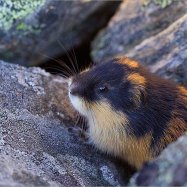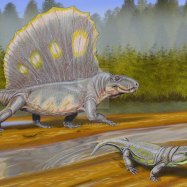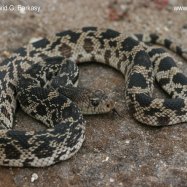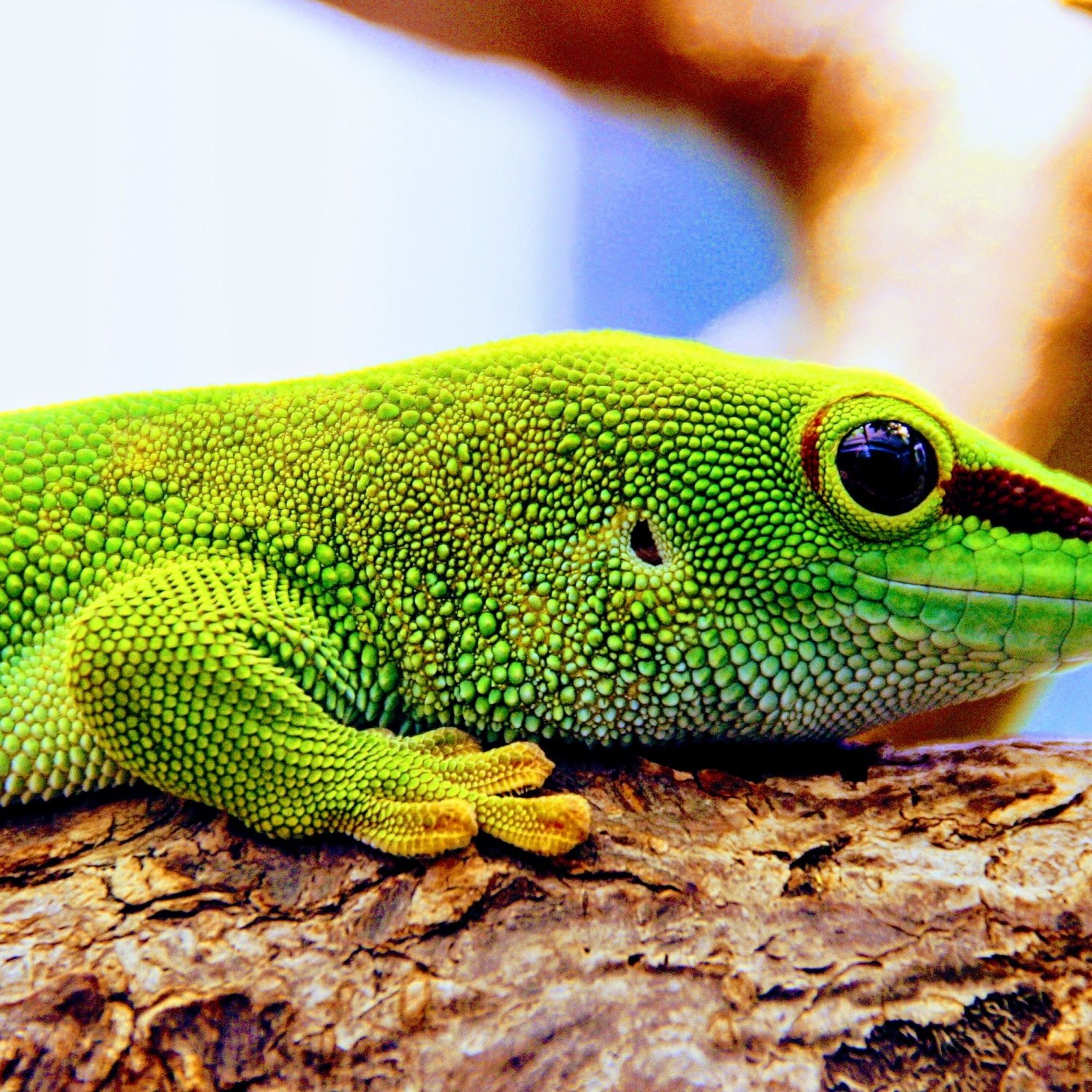
Gecko
0.5 inches to 2 feet
Geckos are fascinating creatures found in various habitats around the world. With their small, slender bodies and unique limb pads, these animals can range in length from just half an inch to a whopping 2 feet! Belonging to the Gekkonidae family, geckos are known for their ability to climb and stick to surfaces, making them incredible hunters and pets. #Gecko #Animals #Gekkonidae
Animal Details Summary:
Common Name: Gecko
Kingdom: Animalia
Habitat: Terrestrial and arboreal habitats
Exploring the Mysterious World of Geckos: Tiny Creatures with Mighty Powers
When we think of reptiles, images of crocodiles, snakes, and lizards typically come to mind. But there is a lesser-known creature that deserves just as much attention – the gecko. These small, elusive creatures may not be as attention-grabbing as their larger counterparts, but they are just as fascinating, if not more.Geckos belong to the family Gekkonidae and are found all over the world in various habitats Gecko. Their scientific name is a combination of the Greek words "ge" meaning earth and "eikon" meaning image, which refers to their ability to blend in with their surroundings. While there are over 1,500 species of geckos, they all share some unique characteristics that make them stand out from other reptiles. In this article, we will dive into the mysterious world of geckos and uncover their incredible features.
Kingdom, Phylum, Class, and Order
Geckos are part of the animal kingdom, and they belong to the phylum Chordata, class Reptilia, and order Squamata. This means they are vertebrates, with backbone and spinal cords, and are cold-blooded like other reptiles. However, what sets them apart from other reptiles is their remarkable ability to climb, jump, and even run on vertical surfaces, thanks to their modified toe pads.Geckos have evolved to have specialized toe pads covered in microscopic hairs called setae that allow them to adhere to almost any surface, even glass. This amazing adaptation has earned them the title of "the world's best climbers" among reptiles.
Family and Habitat
Geckos are found in a wide range of habitats, including tropical rainforests, deserts, grasslands, and even urban areas Glechon. They are adaptable creatures and can thrive in both terrestrial and arboreal environments. This means they can be found on the ground, in trees, and on walls, making them one of the most diverse and widespread reptile families.Feeding Method
Like most reptiles, geckos are carnivorous and primarily feed on insects. Some species also consume small mammals, birds, and even other lizards. Geckos' jaw structure is designed to deliver a powerful bite, but due to their small size, they tend to catch smaller prey.One of the unique features of geckos is their long, sticky tongues that they use to catch prey. Their tongues can stretch up to 1.5 times their body length, making them efficient hunters. They also have keen eyesight, enabling them to spot their prey in low light conditions.
Geographical Distribution
While geckos are found all over the world, they are most commonly found in tropical and subtropical regions. They are most abundant in Asia, Africa, and Australia, with very few species found in the New World. Some species have even made their way to remote islands, such as the Tokay gecko, which resides in the Pacific and has spread to Hawaii.Coloration and Body Shape
Geckos are known for their unique coloration, which varies depending on the species. Some species are brightly colored, while others have duller hues to blend in with their surroundings. This is because they are preyed upon by birds, snakes, and other reptiles, so camouflage is crucial for their survival.In addition to their coloration, geckos have a small and slender body shape, which allows them to move quickly and squeeze into tight spaces. They also have large, round eyes that provide excellent peripheral vision and the ability to see in low light conditions.
Size
Geckos are one of the smallest reptiles, with the smallest species measuring only half an inch and the largest reaching up to 2 feet. The dwarf gecko, found in the Caribbean, is the tiniest species, while the New Guinea giant gecko is the largest. Despite their small size, geckos have a long lifespan, with some species living up to 10-15 years in captivity.Risks and Threats
Like many animals, geckos face various risks and threats that can affect their survival. Habitat destruction, climate change, and invasive species are some of the biggest threats to geckos. Climate change, in particular, poses a significant risk, causing changes in temperature and rainfall patterns, which can disrupt their reproductive cycles and food supply.Geckos are also often captured for the exotic pet trade, with some species, such as the tokay gecko, being highly sought-after for their unique appearance and supposed medicinal properties. The illegal trade of geckos has led to the depletion of some species in their natural habitats, making conservation efforts crucial for their survival.
Geckos in Culture and Mythology
Geckos have been a part of human culture and mythology for centuries. In many places, they are seen as symbols of good fortune, fertility, and even as protectors of households. In some cultures, it is believed that geckos can bring harmony and peace to homes. In Hawaii, the gecko is considered an aumakua or a guardian spirit.In traditional medicine, geckos have been used for various purposes, such as treating asthma, diabetes, and even impotence. However, there is no scientific evidence to support these claims, and it is not advisable to use geckos for medicinal purposes.
In Conclusion
Geckos may be small and often overlooked, but they are truly unique and remarkable creatures. From their incredible climbing abilities to their diverse coloration and cultural significance, they have captured the fascination of humans for centuries. However, with the threats they face in the wild, it is crucial for us to understand and appreciate these fascinating reptiles while also taking necessary measures to protect and preserve their habitats for future generations to enjoy.

Gecko
Animal Details Gecko - Scientific Name: Gekkonidae
- Category: Animals G
- Scientific Name: Gekkonidae
- Common Name: Gecko
- Kingdom: Animalia
- Phylum: Chordata
- Class: Reptilia
- Order: Squamata
- Family: Gekkonidae
- Habitat: Terrestrial and arboreal habitats
- Feeding Method: Carnivorous
- Geographical Distribution: Worldwide
- Country of Origin: Various countries
- Location: Various habitats
- Animal Coloration: Varies depending on species
- Body Shape: Small and slender with limb pads
- Length: 0.5 inches to 2 feet

Gecko
- Adult Size: Varies depending on species
- Average Lifespan: 10 to 20 years
- Reproduction: Egg-laying
- Reproductive Behavior: Varies depending on species
- Sound or Call: Varies depending on species
- Migration Pattern: Non-migratory
- Social Groups: Some species are solitary, while others live in groups
- Behavior: Nocturnal
- Threats: Habitat loss, predation, and illegal pet trade
- Conservation Status: Varies depending on species
- Impact on Ecosystem: Important for controlling insect populations
- Human Use: As pets and for scientific research
- Distinctive Features: Adhesive toe pads and ability to climb on various surfaces
- Interesting Facts: Geckos can regenerate their tail if it breaks off
- Predator: Various predators depending on species
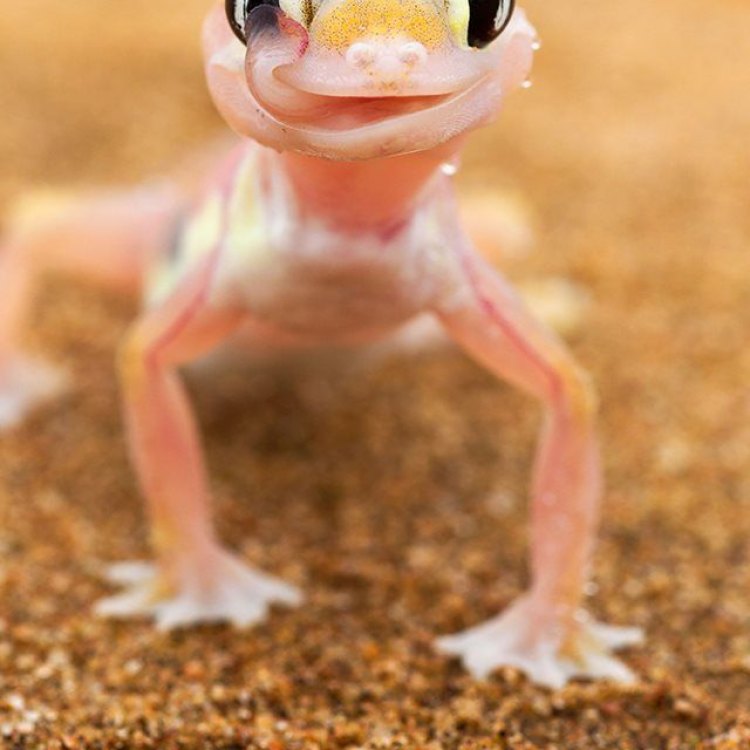
Gekkonidae
Get to Know the Fascinating World of Geckos: The Gecko Guide for Nature Enthusiasts
When it comes to lizards, we often think of large, scaly creatures that crawl on the ground or bask in the sun. But have you ever heard of geckos? These small, colorful lizards may not be as popular as their larger counterparts, but they have captured the hearts of nature enthusiasts around the world with their unique features and behaviors.From their adhesive toe pads to their ability to regenerate their tails, geckos are truly fascinating creatures. In fact, their distinct characteristics have helped them thrive in various environments, making them a crucial part of many ecosystems PeaceOfAnimals.Com. If you're curious to learn more about these amazing lizards, keep reading as we take a deep dive into the world of geckos.
An Introduction to Geckos
Geckos are a diverse group of reptiles belonging to the suborder Gekkota, which consists of about 1,500 species. They're found in various habitats, from rainforests and deserts to urban areas. Geckos are known for their small size, with adult sizes varying depending on the species. Some can be as small as a few centimeters, while others can grow up to a foot in length.The average lifespan of geckos ranges from 10 to 20 years, depending on the species and their living conditions. They're considered to be relatively long-lived for a small reptile, making them a popular choice for pets.
Reproduction and Behavior of Geckos
Geckos reproduce by laying eggs, with the number of eggs varying depending on the species. Some gecko species have a single clutch of 2-4 eggs, while others can lay multiple clutches throughout the year Grass Carp. Interestingly, some species of geckos are parthenogenetic, meaning they can reproduce without a male partner.When it comes to their reproductive behavior, it varies greatly depending on the species. Some geckos mate for life, while others engage in multiple matings. Some species also use pheromones or visual displays to attract a mate. However, there are also some solitary species of geckos that don't engage in any courtship behaviors.
Sounds and Social Groups of Geckos
Another interesting aspect of geckos is their vocalization, commonly known as their "call." However, not all species of geckos produce sounds, and the ones that do have different reasons for doing so. For some species, vocalization is used for communication and attracting a mate, while for others, it's a warning signal to potential predators.In terms of social behavior, geckos can be solitary or live in groups. For instance, the species of day gecko are known to live in groups and have a hierarchy, with dominant males defending their territories. On the other hand, some geckos prefer to live alone and only come together for reproductive purposes.
Nocturnal Nature and Predators
Geckos are primarily nocturnal creatures, meaning they're active at night and sleep during the day. This behavior helps them avoid predators and other threats, as many of their predators are diurnal (active during the day). Some common predators of geckos include snakes, birds, small mammals, and other lizards.However, geckos have also developed various mechanisms to protect themselves from these predators. For instance, some species have the ability to change color to blend in with their surroundings. Many geckos also have camouflage patterns on their skin, making them almost invisible to predators.
Threats and Conservation Status
Similar to most creatures in the animal kingdom, geckos also face threats to their survival. Habitat loss due to human activities, such as deforestation and urbanization, is one of the biggest threats to these lizards. Climate change, pollution, and the illegal pet trade are also major concerns for geckos.Currently, the conservation status of geckos varies depending on the species. Some are considered vulnerable or endangered, while others are still abundant in the wild. Conservation efforts are being made to protect the gecko population and their habitats, but more research and action are needed to ensure their survival.
Importance in Ecosystems and Human Use
Aside from being fascinating creatures, geckos also play a crucial role in maintaining balance in various ecosystems. As predators of insects and other small creatures, they help control their populations, which is essential for the health of the ecosystem. Some species of geckos also aid in pollination, making them an important part of the food chain.Humans have also found various uses for geckos - from being pets to being used in scientific research. With their unique characteristics and adaptability, geckos have become popular pets for reptile enthusiasts. They're also used in scientific studies, mainly due to their regenerative powers and genetic diversity.
Distinctive Features and Interesting Facts
One of the most unique features of geckos is their adhesive toe pads, also known as lamellae. These microscopic hair-like structures enable them to climb on vertical surfaces and even upside down. This adaptation has allowed them to thrive in a wide range of habitats.Additionally, geckos are known for their ability to regenerate their tails. If their tail is grabbed by a predator, they can detach it and grow back a new one. This serves as a defense mechanism and also allows the gecko to escape from danger. However, the regenerated tail is not as functional or as large as the original one.
Discover the Fascinating World of Geckos
Geckos may not be as well-known as other lizards, but they are certainly worth learning about. Their unique features, behaviors, and adaptations make them a fascinating group of creatures that play a vital role in the ecosystem. With their population facing various threats, it's important that we continue to educate ourselves on geckos and work towards their conservation. So next time you come across a gecko, take a moment to appreciate the intricacies of this small but mighty lizard.
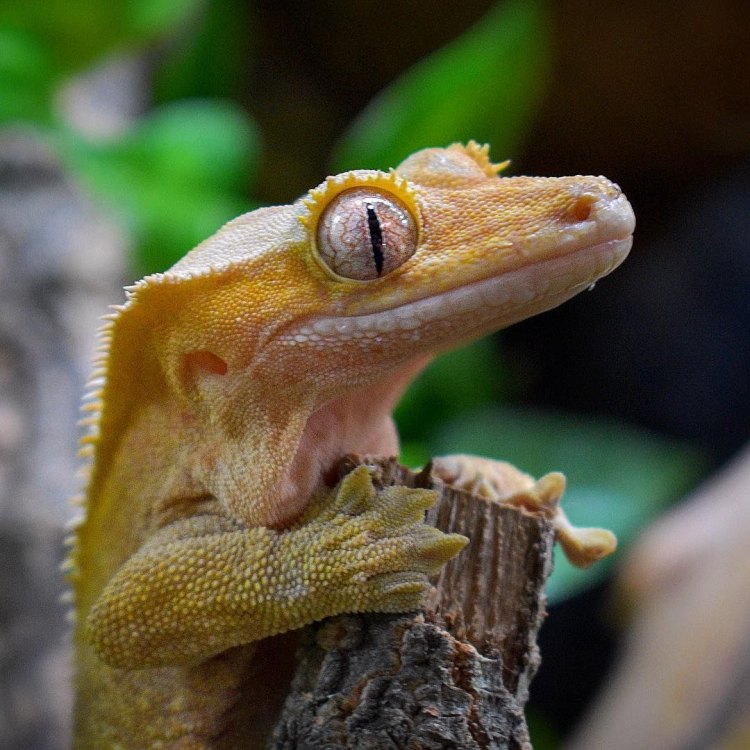
Exploring the Mysterious World of Geckos: Tiny Creatures with Mighty Powers
Disclaimer: The content provided is for informational purposes only. We cannot guarantee the accuracy of the information on this page 100%. All information provided here may change without prior notice.

